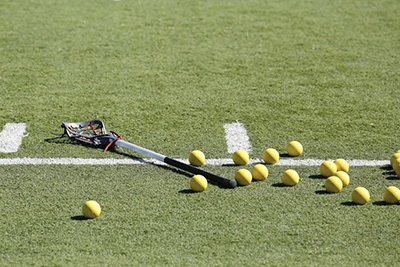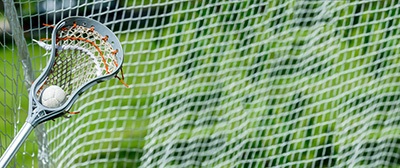Are you a lacrosse player looking to learn more about the sport? If so, then it's essential to know what are lacrosse balls made of and how that affects their performance.
Whether you're an experienced athlete or just starting on your journey of exploring the world of lacrosse, there's something here for everyone!
So dive in with us now and learn everything there is to know about these fantastic sports equipment gems.
More...
Take Away Key Points:
History of lacrosse balls material
Long before synthetic materials were used to make the earliest lacrosse balls, the sport was played with objects made of wood and rock.
This can be traced back to when the game originated among Native American tribes, who often used musket balls or even stones as makeshift versions of what we know today as the lacrosse ball.
With time, these primitive objects slowly evolved into the lacrosse ball that is still used today.
What are lacrosse balls made of today?

Modern lacrosse balls are typically made from an elastomeric material such as latex, rubber, or plastic. The type of material used generally depends on the level of play and the purpose for which the modern lacrosse ball is being used.
Nowadays, much of the world's lacrosse ball supply is made from latex rubber produced overseas. On the other hand, the patented crosslinked polyurethane balls are made in US factories.
1. Rubber lacrosse balls
Latex rubber lacrosse game balls are usually found in outdoor recreational games and pick-up games with friends, while plastic lacrosse balls are often used in high school and college competitions.
Lacrosse balls come in various sizes and colors, allowing them to accommodate any level of play.
Most lacrosse balls are made in factories in China or Taiwan. These lacrosse ball manufacturers employ a unique rubber-mixing technique, combining vulcanized rubber with oils, fillers, and additives; a process also used to create car tires and footwear.
2. Polyurethane lacrosse balls
Polyurethane lacrosse balls are an increasingly popular choice for those looking for enhanced performance and increased durability.
These balls are made with a patented crosslinked polyurethane material that is significantly more durable than rubber, resisting wear and tear over time. This material also provides superior ball handling, grip, and movement compared to traditional rubber lacrosse balls due to its higher elasticity.
Additionally, polyurethane lacrosse game balls are highly resistant to changes in weather conditions, making them perfect for use in any climate or season.
What is inside of a lacrosse ball?
Lacrosse balls have two main components: a vulcanized rubber shell and an inner core. Vulcanized rubber is usually more durable as it mixes natural rubber with other additives under high temperatures.
The outer shell is typically composed of natural rubber and synthetic additives to improve the ball's overall performance. At the same time, the inner core often contains cork particles or other materials that help provide it with a soft feel and enhanced durability.
Together, these components create a smooth-rolling lacrosse ball that resists wear after repeated use.
Check out the dissection video HERE of a lacrosse ball.
How hard is a lacrosse ball?
Lacrosse balls are considered to be medium-hard in terms of their level of density and rebound.
The rubber ball material that makes up the shell is designed to retain its shape over time and provide uniform bounce, but it also has some flexibility to absorb some shock when hit against hard surfaces.
This allows for a more controlled flight path for shots and passes, making it easier for players to control the ball on the field.
How are lacrosse balls made?
Lacrosse balls are made by assembling the three main components of deerskin or cowhide, rubber, and cork.
The outer layer is typically cut from deerskin or cowhide and then stitched or glued together to form a seamless ball.
Then rubber is applied to create durability and to ensure the ball won't crack after being hit multiple times. Finally, cork is added for weight and shock absorption. After assembly, lacrosse balls are tested before being packaged for sale.
Requirements for a lacrosse ball used in tournaments
The NCAA has made revisions to the specifications of lacrosse balls, where an official ball must be 7 ¾ – 8 inches in circumference and have a stamp of approval from NOCSAE.
This is essential for those wanting to play officially, as balls without the required approval won't be allowed. Ultimately, this only applies to official games and not to training balls.
Lacrosse balls must be made from materials that follow certification standards and NOCSAE standards regarding lacrosse ball weight and dimensions.
READ MORE
FAQs
Do lacrosse balls have cement in them?
No, lacrosse balls do not have cement in them. Instead, they are usually made of rubber and have a hollow center filled with a different type of material to give the ball its distinctive bounce. This material varies by manufacturer but often includes nylon or polyurethane foam.
Are all lacrosse balls rubber?

No, not all lacrosse balls are made of rubber. Some are manufactured from many elastomeric materials, such as leather or synthetic leather.
Why are lacrosse balls so hard?
Lacrosse balls are hard because they need to withstand consistent play. The hard outer covering helps the training balls keep their shape and prevents them from being easily damaged when playing lacrosse.
Can a lacrosse ball break a bone?
Yes, a lacrosse ball can break a bone if thrown with enough force. Although the ball is not particularly heavy, it can still pack a punch when it comes in contact with the body.
Why are lacrosse balls so bouncy?
Lacrosse balls are designed to be very bouncy to make the game more enjoyable. The rubber balls are designed to be flexible and elastic, allowing them to rebound quickly after contact with hard surfaces such as a lacrosse stick or the ground.
What color lacrosse balls are legal?
According to the National Federation of State High School Associations, legal lacrosse balls must be yellow, white balls or orange solid rubber in color.
In addition, the official game ball must be marked with the NOCSAE seal of approval and have a circumference ranging from 7.75-8 inches.
Can you replace lacrosse balls with tennis balls?
While it is possible to use tennis balls instead of lacrosse balls, in some cases, they do not meet the necessary legal requirements and can put players at a safety risk.
How heavy are lacrosse balls?
Most lacrosse balls generally have an official weight of 5 ounces, although some can vary slightly depending on the weather conditions.
A certified lacrosse ball is typically 7-9 inches in circumference, with a circumference of 8 inches being the most common.
Final Words
In conclusion, each material has unique properties that work together to create the perfect balance between durability and performance.
Overall, understanding what are lacrosse balls made of is essential for any player who wants to maximize their performance and maintain their equipment in top condition.

Freddy is the heart and soul of Lacrosse Runner. As a former athlete, Freddy is very passionate about Lacrosse. He keeps up with the sport’s changes and innovations and often tests the new equipment released by the leading manufacturers. Read more here
